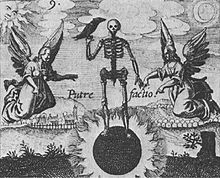Marechera and Beckett.

I begin to wonder about the imminent canonisation of St Dambudzo. A lot of criticism and adulation focus on the radical, the enfant terrible , the creative terrorist. Rather like Milton’s Satan, Marechera (in the growing, popular image) stands and denies his point of creation. Where was it then? Time? Place? Witnesses? He is an artist without lineage…simply original. He is . Such is an odd view. Marechera was a very well read author and all kinds of influences are present within his fiction. In 1982, Marechera returned to Zimbabwe. The sequence of stories in Scrapiron Blues , Tony Fights Tonight , were written, so it is suspected, shortly after his return. These stories are contemporary with Throne of Bayonets , a quartet of poems mixing free-verse, with rhyme and formal stanzas. The subject matter of Throne of Bayonets is Zimbabwe—more specifically, Harare, which stands as a world-in-a-city, like London in The Wasteland — but the technique arises from Eliot and Africa’s Eliot,

















